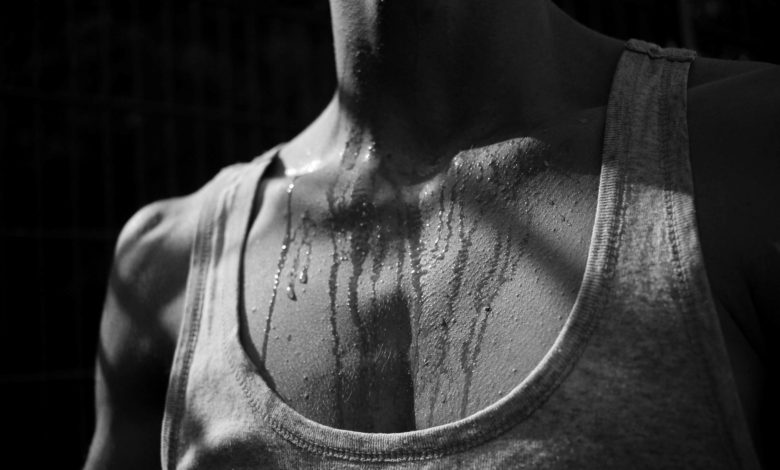Tips for Reducing or Stopping Sweating

Sweating is an automatic process that occurs in the body that helps regulate a person’s body temperature. However, some people experience hyperhidrosis, which means they sweat more than they should. There are two types of hyperhidrosis, primary and secondary. Secondary hyperhidrosis occurs as a side effect of the underlying medical condition or certain medications. Primary hyperhidrosis, on the other hand, has no definable cause. Excessive sweating is often annoying and uncomfortable. However, there are various treatment options for people who experience excessive sweating. Below are a number of treatments and some tips to manage sweating that people can try at home.
Ways to Reduce Sweating
Hyperhidrosis treatment varies depending on its severity. Doctors typically approach step by step to treat the condition. Depending on the severity of hyperhidrosis treatment, treatment options are as follows:
Treatment of mild and moderate hyperhidrosis: Aluminum chloride hexahydrate cream helps treat hyperhidrosis. As the first treatment option, the doctor recommends over-the-counter (OTC) aluminum chloride hexahydrate cream, such as Drysol. People apply this cream at night for the first 3 or 4 nights, then apply occasionally at night when necessary. Some people need additional medications to control their hyperhidrosis. For this, doctors prescribe topical anticholinergic drugs such as glycopyrrolate or oral anticholinergic drugs such as oxybutynin.
Treatment of severe or refractory hyperhidrosis: In particular, severe hyperhidrosis may not respond to initial standard treatments. In such cases, the doctor recommends iontophoresis or botulinum toxin A (Botox) injections. Iontophoresis involves immersing feet or hands in shallow water trays and passing a small electric current through the water. Experts aren’t sure exactly how iontophoresis works, but they report that it reduces sweating in the hands and feet. Some doctors recommend adding an anticholinergic medication to the water to help reduce sweating. Nowadays, hands and feet remain the most common areas for iontophoresis treatment. However, researchers are currently developing iontophoresis that doctors can use to treat other areas of the body.
If Botox injections or iontophoresis fail, the doctor will recommend a surgical procedure to reduce sweating and another option is sympathectomy. This type of surgery damages the nerve supply of the glands to reduce sweating. The sympathetic nerve in the chest cavity controls sweating in the body. Alternatively, some people prefer surgical removal of the affected sweat glands and less invasive than a sympathectomy. Also, unfortunately, people with hyperhidrosis may experience recurrence after surgery.
Home Remedies For Excessive Sweating
There are some practices that can help people manage excessive sweating at home, and these are:
Taking notes about sweating: Some situations can trigger excessive sweating events. Taking notes about this enables people to identify their triggers and record their sweating episodes. People then have the opportunity to choose to avoid these triggers whenever possible.
Avoiding certain foods: Finding alternatives to caffeinated beverages can help prevent sweating. Some foods cause excessive sweating. People living with hyperhidrosis should avoid or limit certain foods. These foods are as follows:
- Monosodium glutamate (MSG)
- Caffeine
- Hot sauce or spicy foods
- Spices such as curry or cumin
- Alcohol
Using antiperspirant products: People who sweat excessively should avoid using deodorants that only mask the smell of sweat. Instead, he should use antiperspirant substances that reduce sweating. The best time to use antiperspirant is at night. Some doctors recommend using prescription antiperspirants every night for 3 to 5 days for dry armpits. Then they reduce their prescription antiperspirant use once or twice a week.
Tips for Dealing with Sweaty Feet
There are some practices that can help reduce excessive sweating or foot wetness. These applications are as follows:
- Wearing sandals whenever possible
- Using shoes made of natural materials that allow the feet to be properly ventilated
- Ensuring shoes are completely dry before each wear
- Remove shoes whenever possible
- Wearing socks that keep moisture away from the skin
- Changing socks daily or more often if they get wet
- Wash off socks before putting them back on.
- Applying antiperspirants to the feet before going to bed and washing them in the morning
When to See a Doctor?
The person who experiences excessive sweating should make an appointment with the doctor. The doctor will perform diagnostic tests to determine the cause, and may refer to a dermatologist if necessary. Some people experience excessive sweating as a side effect of some medications. In this case, the person should discuss with their doctor about changing their medication or dosage. Also, if the person does not know the cause of the hyperhidrosis, they should discuss potential treatment options with their doctor.
How Does Sweat Form?
Sweat glands produce sweat in the skin, people have two types of sweat glands, the Eccrine and Apocrine sweat glands.
Eccrine sweat glands: Eccrine sweat glands are found throughout the body and play a role in regulating body temperature. When body temperature rises, sweat glands release water and as water evaporates from the skin, it lowers the person’s blood temperature and cools the body.
Apocrine sweat glands: Apocrine sweat glands are larger and found mostly in the armpits and genitals. When sweat from the apocrine sweat glands is exposed to bacteria, it produces a bad odor and these glands become active during adolescence.
Causes of Intense Sweating
Excessive stimulation of the eccrine glands causes excessive sweating. People are more likely to experience excessive sweating in the armpit area, face, palms, and soles. These regions have the highest concentration of eccrine glands.
Secondary Hyperhidrosis
Secondary hyperhidrosis occurs as a side effect of some drugs and harmful substance consumption. Some of these are as follows:
- Dopamine agonists
- Selective serotonin reuptake inhibitors
- Antipsychotics
- Alcohol
- Insulin
People living with certain conditions may also experience secondary hyperhidrosis, and these conditions are as follows:
- Diabetes
- Hyperthyroidism
- Parkinson’s disease
- Other neurological disorders
- Tumors such as pheochromocytoma and lymphoma
Bromidrosis
The person with bromhidrosis experiences bad smelling sweat. People with bromhidrosis or excessive body odor (BO) sweating also experience excessive sweating. However, this type of sweat produces a foul odor due to the breakdown of bacteria. There are two types of bromhidrosis, Apocrine and Eccrine.
Apocrine bromhidrosis: Apocrine bromhydrosis occurs when sweat released by apocrine sweat glands is broken down.
Eccrine bromhydrosis: Eccrine bromhydrosis occurs when the eccrine glands break down the sweat-softened keratins. Keratin is a protein found in the skin, and consuming certain foods causes eccrine bromhydrosis.
There are two types of hyperhidrosis, primary and secondary. Secondary hyperhidrosis is often the result of the underlying medical condition or the side effect of the medication. In addition, primary hyperhidrosis has no identifiable cause. Doctors often approach it step by step to treat excessive sweating. Antiperspirants, aluminum chloride creams, or anticholinergic medications work for some people. Hyperhidrosis, which is particularly severe or resistant, requires more intensive treatment. In such cases, iontophoresis, Botox injections or surgical interventions are required.





